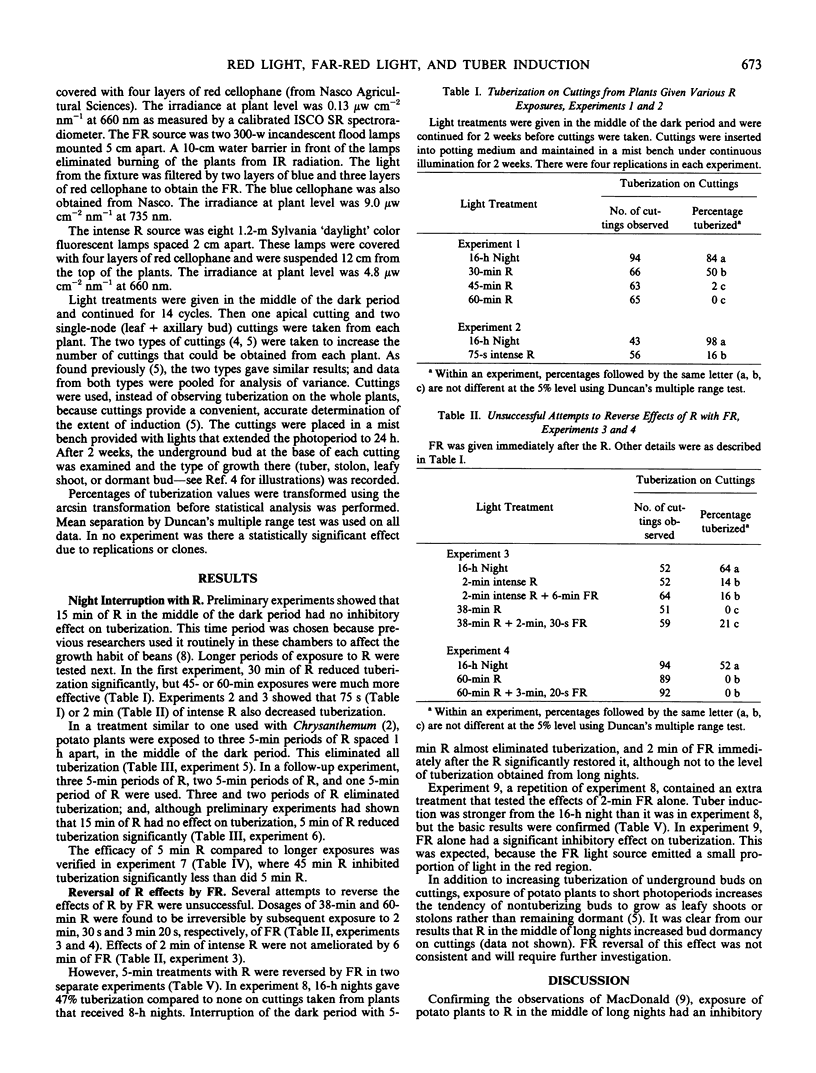Abstract
The hypothesis that phytochrome is involved in the regulation of potato (Solanum tuberosum L.) tuberization was tested. When 5 minutes of red light were given in the middle of the 16-hour dark period to which whole plants were exposed daily for 14 days before making cuttings, the percentage of tuberization on cuttings decreased. The effect of red light was significantly reversed by 2 minutes of far-red light given immediately after the red in each of two separate experiments. This supports the hypothesis that phytochrome is at least indirectly involved.
Longer exposures to red light were not always as effective as a 5-minute exposure in reducing tuberization and were not reversible by far-red light.
Full text
PDF


Selected References
These references are in PubMed. This may not be the complete list of references from this article.
- Ewing E. E. Shoot, Stolon, and Tuber Formation on Potato (Solanum tuberosum L.) Cuttings in Response to Photoperiod. Plant Physiol. 1978 Mar;61(3):348–353. doi: 10.1104/pp.61.3.348. [DOI] [PMC free article] [PubMed] [Google Scholar]


